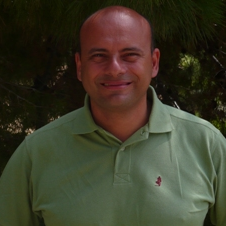Waste Management and Application of the Principles of the Circular Economy
A special issue of Sustainability (ISSN 2071-1050). This special issue belongs to the section "Environmental Sustainability and Applications".
Deadline for manuscript submissions: closed (31 December 2021) | Viewed by 196381
Special Issue Editors
Interests: waste management; air quality management; human health risk assessment; water management; wastewater treatment; environmental engineering
Special Issues, Collections and Topics in MDPI journals
Interests: environmental sustainability; energy efficiency; environmental management; motor fuels; petroleum refining
Special Issues, Collections and Topics in MDPI journals
Special Issue Information
Dear Colleagues,
The problem of proper waste management is absolutely a priority both in advanced economies and in developing countries. The application of circular economy principles allows, if properly put into practice, the maintenance of secondary resources in the production circuit and the preservation of primary reserves. The focus of this Special Issue is on research and case studies that examine the issue of waste management not only from a technical and engineering point of view, addressing innovative solutions, but also economically, focusing on the main challenges and opportunities in the cycle of recycling, recovery, regeneration and reuse of waste, and the necessary involvement of the population, as a fundamental element on which the applicability of the principles of the circular economy is based. Penetration of the principles of the circular economy into the waste management scenarios requires new political and legislative decisions as well as a favorable social context. Moreover, the significance of the problem of efficient waste management requires an interdisciplinary approach to solutions and holistic visions for scenarios selection, which necessitates a special formation of the skills of professionals involved.
Please send research papers or case studies related to the following topics:
- critical issues and challenges for the application of circular economy principles in developing countries
- externalities of waste processing, health care impact
- economic implications linked to the adoption of circular economy principles, the cost and benefits of waste management
- industrial ecology
- recycling, reuse, regeneration and recovery of waste
- landfill optimization, mining and environmental remediation
- wastewater treatment
- management of WEEE
- hazardous waste management
- recycling end-of-life vehicles
- problems related to the management of tires, plastics and other waste characterizing current social development
- criticality and procurement of materials
- case studies and research on the LCA and MFA of products
- research on the efficiency, including energy efficiency, of materials
- supply chain challenges within the circular economy
- biomass valorization, energy recovery and renewable energy provision
- risk assessment in different waste management scenarios
- consumer behavior and value systems of the circular economy
- governmental decisions and international cooperation issues
- methodology of education for waste management
Prof. Vincenzo Torretta
Prof. Elena Magaril
Guest Editors
Manuscript Submission Information
Manuscripts should be submitted online at www.mdpi.com by registering and logging in to this website. Once you are registered, click here to go to the submission form. Manuscripts can be submitted until the deadline. All submissions that pass pre-check are peer-reviewed. Accepted papers will be published continuously in the journal (as soon as accepted) and will be listed together on the special issue website. Research articles, review articles as well as short communications are invited. For planned papers, a title and short abstract (about 100 words) can be sent to the Editorial Office for announcement on this website.
Submitted manuscripts should not have been published previously, nor be under consideration for publication elsewhere (except conference proceedings papers). All manuscripts are thoroughly refereed through a single-blind peer-review process. A guide for authors and other relevant information for submission of manuscripts is available on the Instructions for Authors page. Sustainability is an international peer-reviewed open access semimonthly journal published by MDPI.
Please visit the Instructions for Authors page before submitting a manuscript. The Article Processing Charge (APC) for publication in this open access journal is 2400 CHF (Swiss Francs). Submitted papers should be well formatted and use good English. Authors may use MDPI's English editing service prior to publication or during author revisions.






